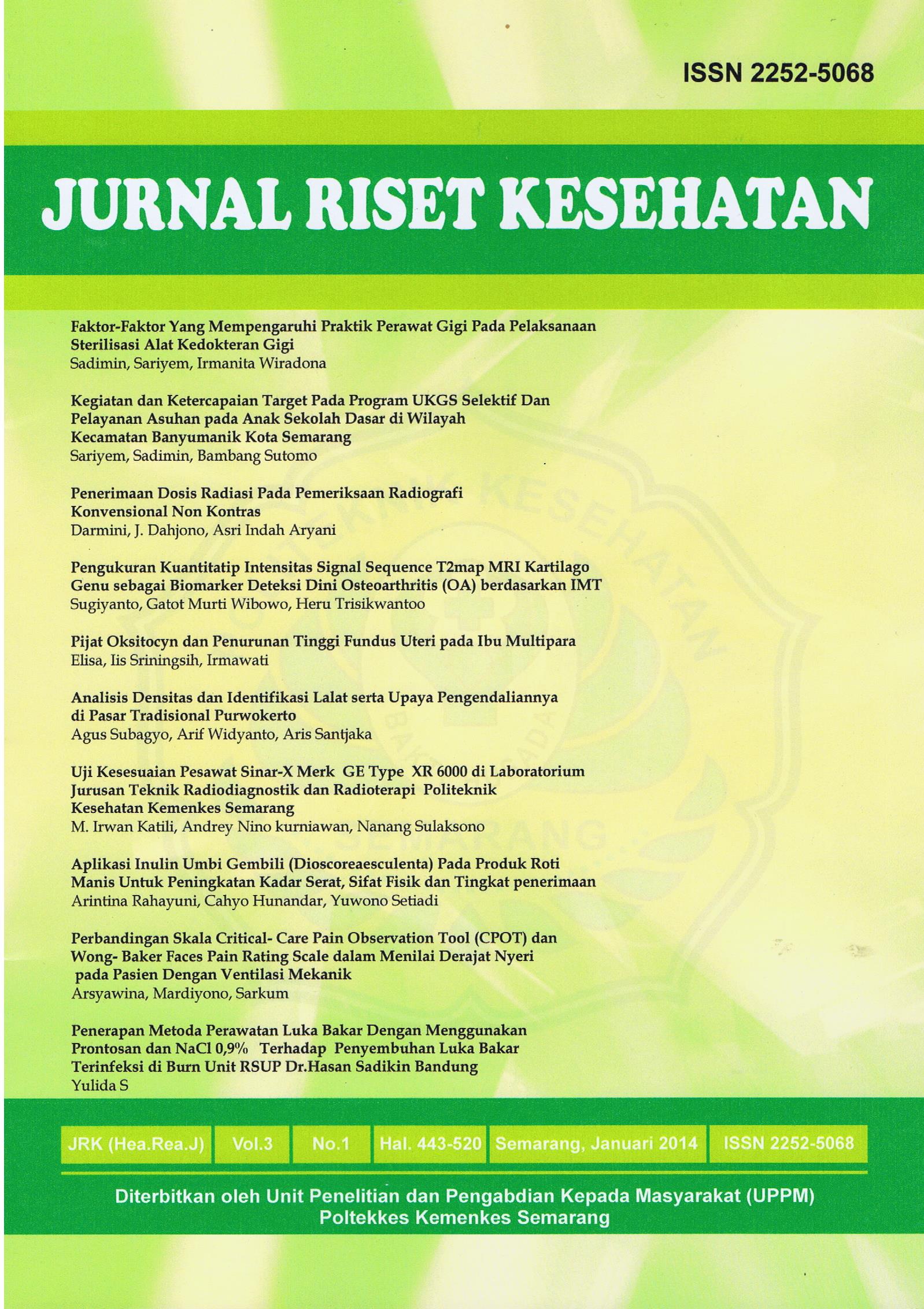Pengukuran Kuantitatip Intensitas Signal Sequence T2map MRI Kartilago Genu sebagai Biomarker Deteksi Dini Osteoarthritis (OA) berdasarkan IMT

This quantitative study was an experimental design. A total of 18 healthy male and female volunteers, with differnt BMI involved in the study by consecutive random sampling. An expert Radiologist evaluated all the 38 T2map images being studied. The arbitrary SI data were measured using one millimeter ROI of the machine measurement tools and the values of T2map were based on a fitted exponential decay calculation generated from the graphs developed by the Window excel. The mean differences amongst T2map values on the sagital plan femoro-tibial cartilage and coronal plan femoro-tibial (medial and lateral) were statistically tested using One-way Anova, and all the T2map images also graded by the radiologist following the OA the grading levels as published Internationally. In conclusion, an increased TE on the application of multi-spin echo sequence T2map, causing the calculated T2map values varied not only in the sagital area of the knee joint cartilage of the femoral and tibial but also in the coronal femoro-tibial (medial and lateral) for both the male and female healthy volunteer subjects, and different BMI category (under-weight, normal-weight, over-weight). The values T2map within and between BMI group and among different gender showed statistically no difference (p-value > 0.05). The averaged T2map and its standard deviations have been used to define the T2map biomarkers (baseline T2map values) in each BMJ group subjects and between gender for both of the knee joint sagital and coronal planes despite the 1.5T MRI modality is not facilitated to commercial qMRI supporting software.
Key words: T2map MRI, OA, knee joint-cartilage, BMI group, gender
